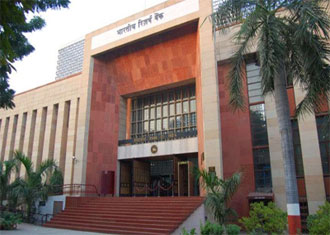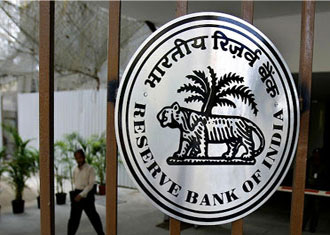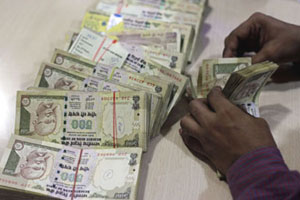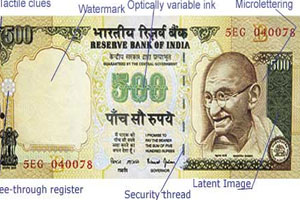The Reserve Bank of India is India's Central Banking Institution, which controls the Monetary Policy of the Indian Rupee. It commenced its operations on 1 April 1935 during the British Rule in accordance with the provisions of the Reserve Bank of India Act, 1934. The original share capital was divided into shares of 100 each fully paid, which were initially owned entirely by private shareholders.[5] Following India's independence on 15 - August - 1947, the RBI was nationalised in the year of 1 January 1949.

The RBI plays an important part in the Development Strategy of the Government of India. It is a member bank of the Asian Clearing Union. The general superintendence and direction of the RBI is entrusted with the 20-member Central Board of Directors: the Governor, 4 Deputy Governors, 1 Finance Ministry representatives, 10 government-nominated directors to represent important elements from India's economy, and 4 directors to represent local boards headquartered at Mumbai, Kolkata, Chennai and New Delhi. Each of these local boards consists of 5 members who represent regional interests, and the interests of co-operative and indigenous banks.
The Reserve Bank of India has four regional representations: North in New Delhi, South in Chennai, East in Kolkata and West in Mumbai. The representations are formed by five members, appointed for four years by the central government and serve—beside the advice of the Central Board of Directors—as a forum for regional banks and to deal with delegated tasks from the central board.The institution has 22 regional offices.
The Board of Financial Supervision (BFS), formed in November 1994, serves as a CCBD committee to control the financial institutions. It has four members, appointed for two years, and takes measures to strength the role of statutory auditors in the financial sector, external monitoring and internal controlling systems.
Offices and Branches
The Reserve Bank of India has four zonal offices.It has 19 regional offices at most state capitals and at a few major cities in India. Few of them are located in Ahmedabad, Bangalore, Bhopal, Bhubaneswar, Chandigarh, Chennai, Delhi, Guwahati, Hyderabad, Jaipur, Jammu, Kanpur, Kolkata, Lucknow, Mumbai, Nagpur, Patna, and Thiruvananthapuram. It also has 09 sub-offices located in Samana, Dehradun, Gangtok, Kochi, Panaji, Raipur, Ranchi, Shillong, Shimla , Srinagar and Agartala .
The bank has also two training colleges for its officers, viz. Reserve Bank Staff College at Chennai and College of Agricultural Banking at Pune. There are also four Zonal Training Centres at Mumbai, Chennai, Kolkata and New Delhi.
Main functions
Regulator and supervisor of the financial system
The institution is also the regulator and supervisor of the financial system and prescribes broad parameters of banking operations within which the country's banking and financial system functions.Its objectives are to maintain public confidence in the system, protect depositors' interest and provide cost-effective banking services to the public. The Banking Ombudsman Scheme has been formulated by the Reserve Bank of India (RBI) for effective addressing of complaints by bank customers. The RBI controls the monetary supply, monitors economic indicators like the gross domestic product and has to decide the design of the rupee banknotes as well as coins.
Managerial of exchange control
The central bank manages to reach different goals of the Foreign Exchange Management Act, 1999. Objective: to facilitate external trade and payment and promote orderly development and maintenance of foreign exchange market in India.
Issuer of currency

The bank issues and exchanges or destroys currency notes and coins that are not fit for circulation. The objectives are giving the public adequate sups of RBI are to issue bank notes, to maintain the currency and credit system of the country to utilize it in its best advantage, and to maintain the reserves. RBI maintains the economic structure of the country so that it can achieve the objective of price stability as well as economic development, because both objectives are diverse in themselves. For printing of notes, the Security Printing and Minting Corporation of India Limited (SPMCIL), a wholly owned company of the Government of India, has set up printing presses at Nashik, Maharashtra and Dewas, Madhya Pradesh. The Bharatiya Reserve Bank Note Mudran Private Limited (BRBNMPL), a wholly owned subsidiary of the Reserve Bank, also has set up printing presses at Mysore in Karnataka and Salboni in West Bengal. In all, there are four printing presses And for minting of coins, SPMCIL has four mints at Mumbai, Noida (UP), Kolkata and Hyderabad for coin production.
Banker's bank

RBI also works as a central bank where commercial banks are account holders and can deposit money.RBI maintains banking accounts of all scheduled banks. Commercial banks create credit. It is the duty of the RBI to control the credit through the CRR, bank rate and open market operations. As banker's bank, the RBI facilitates the clearing of cheques between the commercial banks and helps inter-bank transfer of funds. It can grant financial accommodation to schedule banks. It acts as the lender of the last resort by providing emergency advances to the banks. It supervises the functioning of the commercial banks and take action against it if need arises.
Detection of fake currency

In order to curb the fake currency menace, RBI has launched a website to raise awareness among masses about fake notes in the market www.paisaboltahai.rbi.org.in provides information about identifying fake currency.
On January 22, 2014; RBI gave a press release stating that after March 31, 2014, it will completely withdraw from circulation all banknotes issued prior to 2005. From April 1, 2014, the public will be required to approach banks for exchanging these notes. Banks will provide exchange facility for these notes until further communication. The Reserve Bank has also clarified that the notes issued before 2005 will continue to be legal tender. This would mean that banks are required to exchange the notes for their customers as well as for non-customers. From July 1, 2014, however, to exchange more than 10 pieces of `500 and `1000 notes, non-customers will have to furnish proof of identity and residence to the bank branch in which she/he wants to exchange the notes.
This move from the Reserve Bank is expected to unearth black money held in cash. As the new currency notes have added security features, they would help in curbing the menace of fake currency.
Developmental role
The central bank has to perform a wide range of promotional functions to support national objectives and industries. The RBI faces a lot of inter-sectoral and local inflation-related problems. Some of this problems are results of the dominant part of the public sector.
Read more... Reserve Bank of India